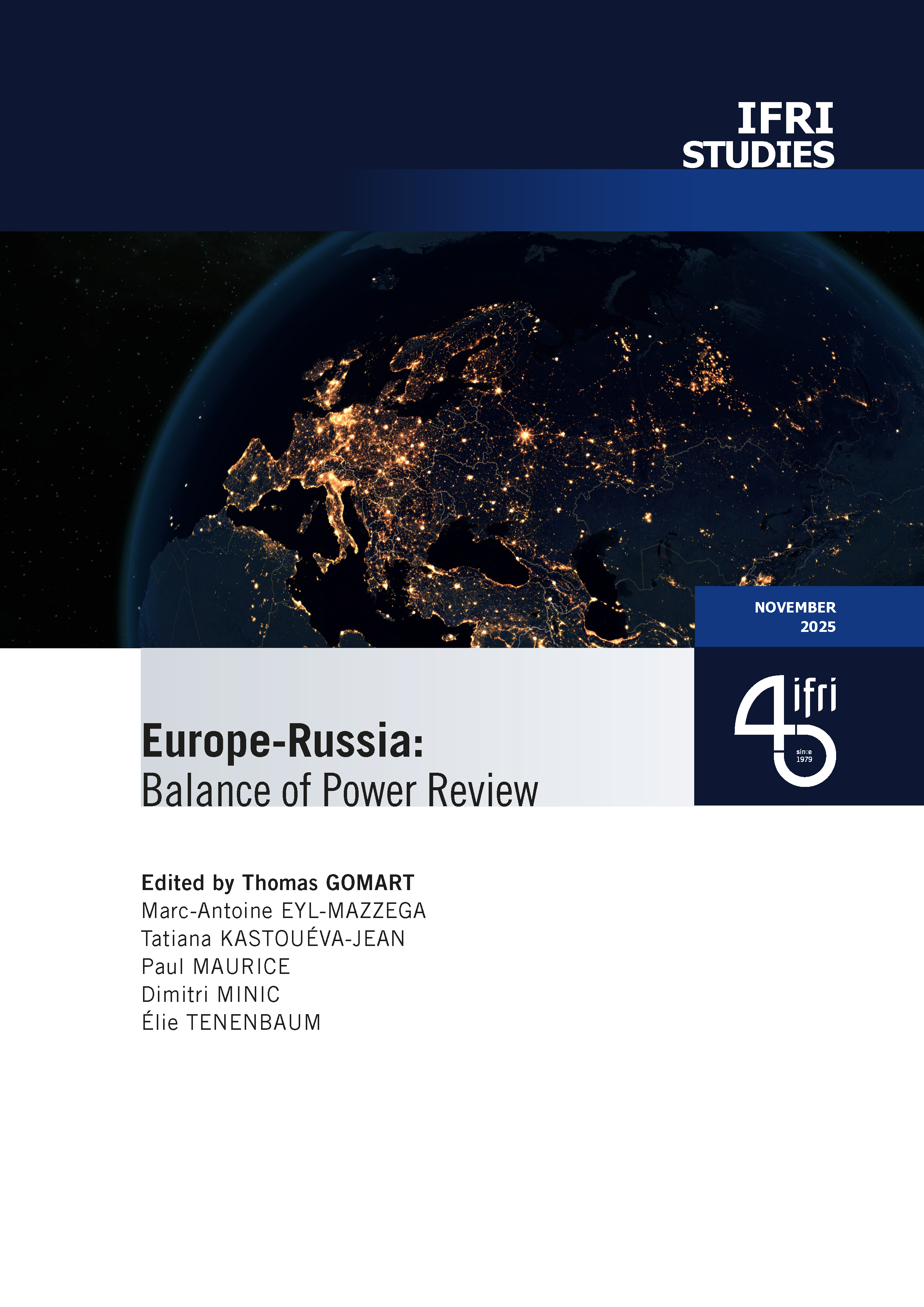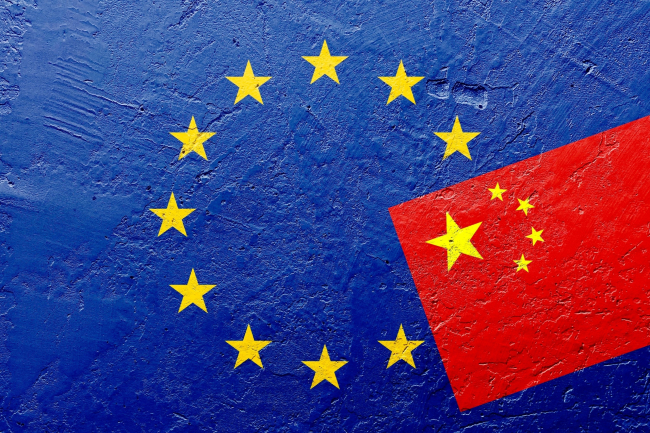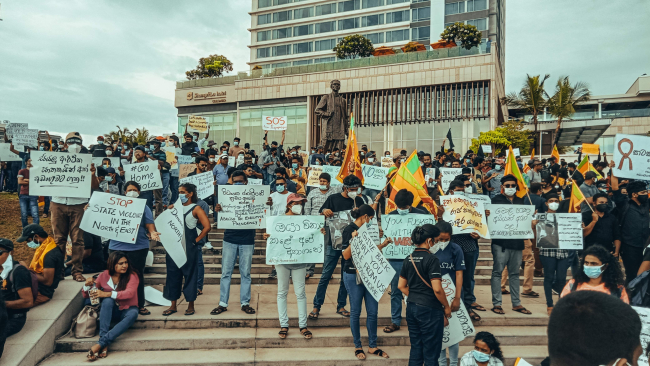Should We Forget about the Asia-Africa Growth Corridor?

The Asia-Africa Growth Corridor (AAGC), an Indian-Japanese collaborative vision regarding development, connectivity and cooperation between Asia and Africa, was announced in 2017.
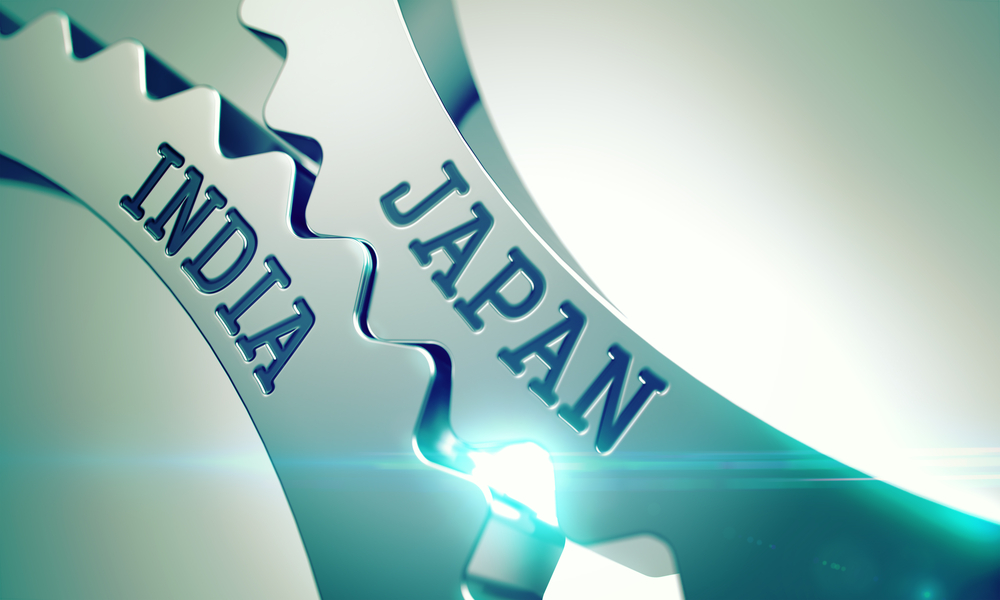
It attracted a lot of attention since it looked like an alternative to China’s Belt and Road Initiative (BRI). The vision contains an attractive grand design from both business and geopolitical perspectives. However, in 2020, there is no outstanding achievement regarding AAGC. This paper provides an assessment of the AAGC and suggests explanations for its failure to produce any concrete achievements. Despite the slow progress so far, this author argues that the AAGC is a concept worth redesigning and reviving in order to uphold the Japan-India expanding cooperation.
The AAGC: a broad and vague concept
On May 23, 2017, at the 52nd African Development Bank (ADB) meeting in Gujarat, India, Prime Minister Narendra Modi announced the AAGC, under which India and Japan would work together to support Africa’s development.[1]
Prior to the meeting, in November 2016, Prime Ministers Modi and Shinzo Abe agreed on improving connectivity between Asia and Africa. They decided to seek synergy between India’s “Act East” Policy and Japan’s “Expanded Partnership for Quality Infrastructure” Policy. They also shared the intention to work together to develop industrial corridors and industrial networks in Asia and Africa. Following this statement, research institutions in India and Japan created the vision document of AAGC, consulting with African think tanks (from South Africa and Mozambique, in particular), and presented it at the ADB meeting. The Indian and Japanese research institutions are: the Research and Information System for Developing Countries (RIS), India; the Economic Research Institute for ASEAN and East Asia (ERIA), and the Institute of Developing Economies–Japan External Trade Organization (IDE-JETRO), Japan.
The vision aims to connect Asia and Africa and develop Africa’s capabilities. It is based on four major pillars: 1) Development and Cooperation Projects, 2) Quality Infrastructure and Institutional Connectivity, 3) Enhancing Capacities and Skills, and 4) People-to-People partnership. It prioritizes development projects in health and pharmaceuticals, agriculture and its processing, disaster management and skill enhancement. Regarding connectivity, it emphasizes quality infrastructure, which is aligned with Japan’s infrastructure export policy, which it has promoted since 2015.[2]
As it was announced right after the Belt and Road Forum meeting in China, held on May 14-15, 2017 in Beijing, the AAGC was often regarded as a countermeasure to China’s BRI – especially because India decided to support the vision of a liberal, value-based order and to support the Free and Open Indo-Pacific Strategy unveiled by then Prime Minister Abe in August 2016. For example, some Indian and Japanese media regarded the AAGC as an alternative to China, and some Chinese media mentioned the AAGC as an example of India’s desperate strategic anxiety concerning China. India was indeed the only country along the Belt and Road that did not send any delegates to the Belt and Road Forum in Beijing. Some researchers also concluded that China’s growing influence on Africa worried India and Japan and encouraged them to work together and create the idea of the AAGC.
However, their interests in developing cooperation with Africa are not merely a reaction to China. And the initiative is consistent with their past foreign policies. Historically, India has strong ties with Southeast Africa through diaspora and trade, and, after World War II, its relationship got more robust through the South-South cooperation. Japan also has strengthened its commitment to Africa since 1993 when it initiated the Tokyo International Conference on African Development (TICAD). The votes of African countries were significant for Japan’s long-cherished United Nations (UN) reform: expanding the membership of the Security Council and becoming a permanent member. Nowadays, not only its political relationships but also its economic ties are becoming important for Japan. Since 2013 at least, the Abe administration has put the priority on incentivizing private investments on the African continent in order to secure energy resources and access to an expanding market. The number of Japanese companies doing business in Africa has increased 1.5 times compared to 2010. Africa is thus an important region for both Japan and India, and they had been discussing their Triangular Cooperation in the India-Japan dialogue on Africa since 2010.
Not only politics but also business interests created this momentum. Some Japanese companies wanted to collaborate with Indian companies so as to get into the African market. As well, the AAGC was designed as a bottom-up process.[3] The collaboration between Japanese and Indian companies could be mutually beneficial. Cooperating with Japanese manufacturing companies will enable Indian companies to improve their products and strengthen exports to Africa, while the AAGC contributes to making India an export hub in the global value chain. For Japan, given the similarity between the markets of India and Africa, it makes sense to export their goods from India. The African market is similar to the Indian market with respect to developmental stage of economy, infrastructure, climate, etc. When we compare Purchase Power Parity-based Gross Domestic Product (GDP) per capita and GDP price levels, India would rate in the middle of Sub-Saharan African countries. India’s quality of trade and transport-related infrastructure is at the same level as Southeast African countries. Market similarity enables Japan to export similar products to Africa from India. For example, Toyota and Suzuki work together to sell their made-in-India cars to 47 African countries, and Daikin exports air conditioners to Africa from its subsidiary in India. India’s foreign trade policy, the Merchandise Exports from India Scheme (MEIS), encourages Japanese firms to work with Indian firms.
A vision without concrete achievement
The AAGC showed that India and Japan had shared values, and had a grand plan to promote their common principles and contribute to regional development in Asia and Africa. It attracted a lot of attention not only because it was published in the midst of the first BRI forum but also because it showed that India and Japan could collaborate to spread their idea in Asia and Africa, while involving other countries.
However, even though three years have passed since they published the vision document, we do not have any concrete achievements. The three organizations that created the vision have not shown any progress regarding the AAGC. The RIS has a website about it, but the latest event concerning the AAGC was in August 2017, and there are no recent updates. The RIS published some discussion papers in 2018, but we cannot find any recent ones. The ERIA updated only one meeting and two articles regarding the AAGC. IDE-JETRO conducted a research project called “Challenges for the Asia and Africa Growth Corridor” in 2017, but there have been no updates. Nor does JETRO have any updates about the AAGC; it instead focused on launching (in December 2019) an India-Japan business platform, which aims to offer businesses matching opportunities, and support the formation of business cooperation projects between Japanese and Indian companies in the Asia-Africa region.
The AAGC has not been on an official agenda for the Indian and Japanese prime ministers, as there was no concrete progress. Modi and Abe have met eight times since the AAGC was announced, but they never mentioned it officially at summit meetings. It never appeared on their joint statements. In the joint statement of September 2017, they mentioned only the desire to further promote cooperation and collaboration in Africa. In the statement of October 2018, they welcomed the discussions on establishing the “Platform for Japan-India Business Cooperation in the Asia-Africa Region”, the project that JETRO launched recently with the Confederation of Indian Industry (CII), but did not mention the AAGC. They also signed the factsheet called “India-Japan Development Cooperation in the Indo-Pacific, including Africa” but the AAGC did not appear even in this paper. The document includes a similar idea relating to African development, such as connectivity, human resource development, and capacity-building, but the AAGC was not on the list.
In short, the AAGC was an attractive vision, and it succeeded in showing the strong ties between India and Japan. But it has no significant achievements, and people have almost forgotten about it. Why did it not work? The following points can be given as reasons.
The AAGC was just a vision document, and there were no concrete implementation plans. The paper was published so that Modi could announce it at the ADB meeting, which was held for the first time in India. It can be assumed that the two prime ministers prioritized releasing a concept over creating a detailed work plan. There was no concrete division of roles among the players, such as the RIS, ERIA and IDE-JETRO, and no concrete schedule for implementing the vision. In the end, no players took the initiative to break it down and move it forward. It is probable that the organizations concerned lacked the power to do so. To make the vision a reality, both governments needed to have committed to it more strongly. The buzz following the announcement of the AAGC was probably one of the low-hanging fruits of the initiative; the very abstract concept would actually have been very challenging to implement concretely. The two governments probably decided to focus on existing projects rather than pushing this new one.
In addition, even though the vision was designed from a business perspective, it is doubtful that it suited business interests. The idea was so broad that it includes connectivity, skill development, education and healthcare, and thus focused more on raising the standards of the social environment rather than eliminating hurdles to do business in Africa or creating a scheme that encourages companies to invest more in Africa.
Rethinking the AAGC
If nothing changes, the AAGC will be seen as irrelevant, and will be forgotten. However, it can still be useful for the future India-Japan partnership. India and Japan share essential values such as political liberalism, the market economy, the rule of law and democracy. With Modi and Abe, the countries’ bilateral relations strengthened, and the private sectors welcomed their strong partnership.
We should think about how we can revise the AAGC to make it more attractive and beneficial. It should be a profit-driven project rather than a human development vision. It did not work well because it includes too many areas, and there were no clear benefits for companies; the private sectors did not have incentive to put pressure on governments to implement the plan. Areas of cooperation should be identified that would make the vision more attractive to companies. Healthcare and agriculture are often discussed as promising areas but they do not lead to direct benefits for the private sectors, especially Japanese companies. According to the JETRO’s research, Japanese foreign direct investment in Africa consists of telecommunication, mining, transportation, finance/insurance, and general machinery. The healthcare and agriculture sectors are quite small. Even for Indian companies, healthcare, pharmaceutical, and food and tobacco have a mere 7% share of capital expenditure in Africa
A next step should achieve both strategic and business interests. Investment should be focused on the areas that align with promoting a liberal and value-based order, while encouraging Japanese and Indian companies to collaborate. Possible areas are laws and regulations, as well as infrastructure. The JETRO researched the challenges for Japanese companies to do business in the Asia-Pacific and African markets; the research shows that the biggest one is political instability, but the complicated and unclear rules or procedures regarding trade and investment as well as poor infrastructure are common challenges for Japanese companies to do business in both the South Asian and African markets. Eliminating these risks would also benefit Indian companies doing business in Africa. A survey of the CII shows that around 80% of Indian companies think that lack of reliability of local business partners and lack of infrastructure are trade and investment issues in Africa. Improving business rules would decrease difficulties with local business partners. Higher-quality infrastructure would ensure sustainable operation. Mitigating challenges such as untransparent legislation and undeveloped infrastructure could improve the business environment in the Asia-Africa markets. Also, helping Asian and African countries to solve these issues would fit with the “Free and Open Indo-Pacific Strategy” that aims to promote a liberal and value-based order.
Japan should take the initiative to flesh out the AAGC 2.0, focusing on these areas. Having provided legal technical assistance to some countries from 1994, Japan has know-how in improving legislative systems in other countries. Since it has focused on Asian countries so far, the target area should be expanded to the Asia-Africa region. Also, Japan has promoted quality infrastructure, and it should be a basic concept of infrastructure policy in the AAGC 2.0. For implementation, the Ministry of Justice (MOJ) and the Japan International Cooperation Agency (JICA) should be included as key players. Both have promoted legal technical assistance by Japan’s Official Development Assistance (ODA), and JICA is the major funding agency for developing infrastructure with Japanese technology.
We are still in the middle of the COVID-19 pandemic, and we need to consider its impact. We do not know how long the pandemic will last, but it already has had a damaging impact on the global economy, and has changed our lifestyles; we need to tackle this first. Japan’s new Prime Minister Yoshihide Suga said he would tackle the pandemic and rebuild the economy as his top priority. For the time being, the Japanese and Indian governments need to concentrate on creating post-COVID lifestyles and reviving the economy. We also need to understand that the personal trust between prime ministers plays a strong role in moving forward a bilateral relationship. Suga needs to build trust with Modi, but nobody knows when they will have the next in-person summit meeting. However, Suga emphasized the importance of continuity, and said he would consult with ex-PM Abe regarding foreign policy. Abe also said that he would assist Suga by serving as a special diplomatic envoy. Thus, in the long term, India and Japan can work together to promote shared values and develop the Indo-Pacific area, including Africa – and the AAGC can help them to succeed.
[1]. PM’s address at the inauguration of the Annual Meeting of the African Development Bank, 23 May 2017, available at: www.pmindia.gov.in.
[2]. Launch of Asia Africa Growth Corridor Vision Document, Ahmedabad, 24 May 2017, available at: ris.org.in.
[3]. C. Pajon and I. Saint-Mézard, “Asia–Africa Growth Corridor at the Crossroads of Business and Geopolitics”, East Asia Forum, 8 November 2018, available at: www.eastasiaforum.org.
Download the full analysis
This page contains only a summary of our work. If you would like to have access to all the information from our research on the subject, you can download the full version in PDF format.
Should We Forget about the Asia-Africa Growth Corridor?
Related centers and programs
Discover our other research centers and programsFind out more
Discover all our analyses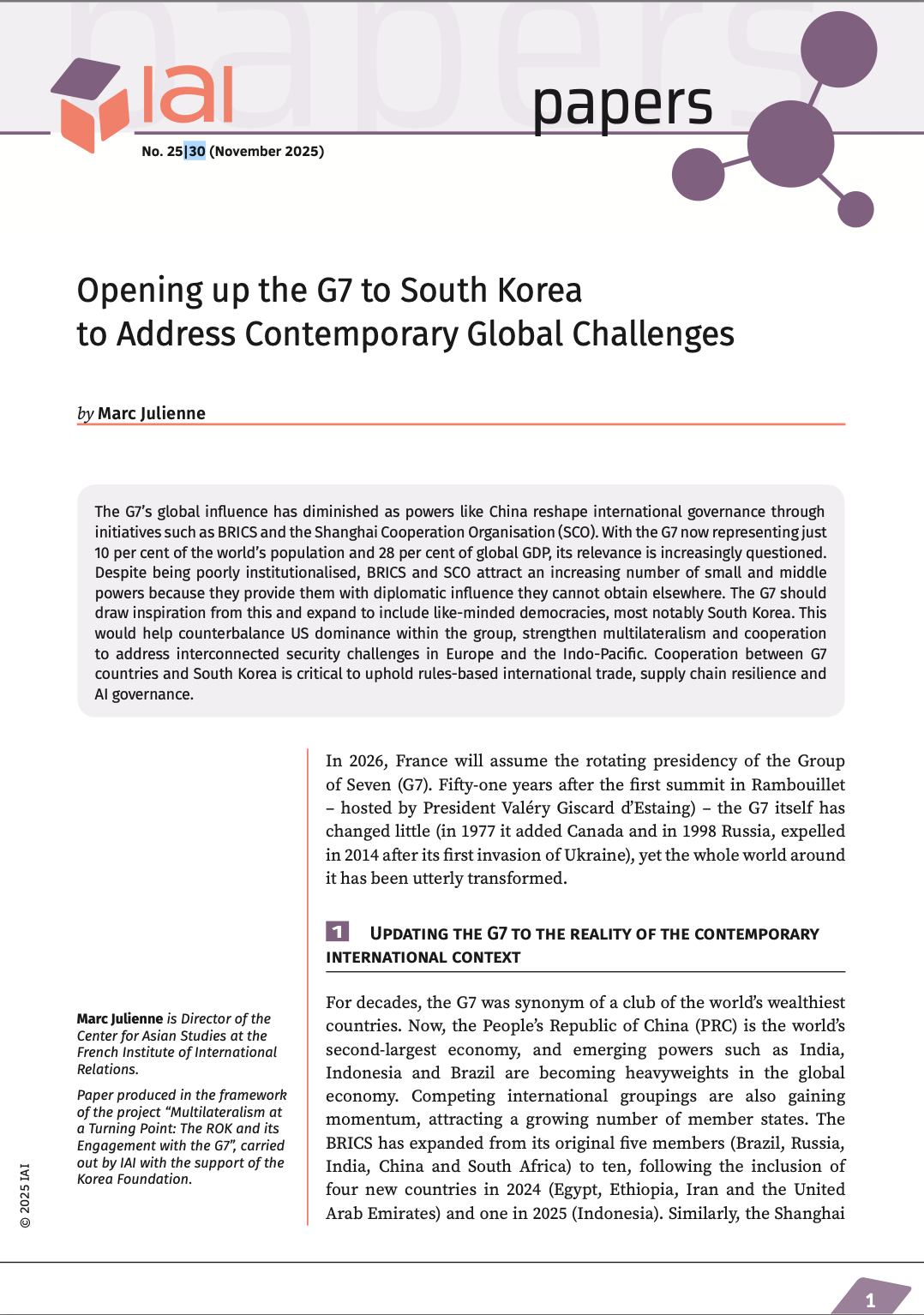
Opening up the G7 to South Korea to Address Contemporary Global Challenges
The G7’s global influence has diminished as powers like China reshape international governance through initiatives such as BRICS and the Shanghai Cooperation Organisation (SCO). With the G7 now representing just 10 per cent of the world’s population and 28 per cent of global GDP, its relevance is increasingly questioned.
Expanding SPDMM as a pivotal institution in the Pacific – A French perspective
The South Pacific Defence Ministers’ Meeting (SPDMM) is the only forum that brings together defense ministers from the wider South Pacific — including Chile, which is hosting it for the first time. This heterogeneous group of countries with varying resources, capacities, and interests — Australia, Chile, Fiji, France, New Zealand, Papua New Guinea (PNG), and Tonga — are united by their shared determination to strengthen cooperation on maritime security and humanitarian assistance and disaster relief (HADR) activities.
EU’s Derisking From China: A Daunting Task
With economic security as a major concern, the EU has recently turned to “derisking” from China. The EU strategy entails reducing critical dependencies and vulnerabilities, including in EU supply chains, and diversifying where necessary, while recognizing the importance and need to maintain open channels of communication.
Sri Lanka’s NPP Government. From System Change to Structural Compliance
In September 2024, a relative outsider to Sri Lanka’s two-party-dominated political system, Anura Kumara Dissanayake, won the presidential elections. The anti-establishment, populist movement he represented, the National People’s Power (NPP), went on to receive an overwhelming mandate in the November 2024 general elections, winning 159 seats in a 225-member parliament.


